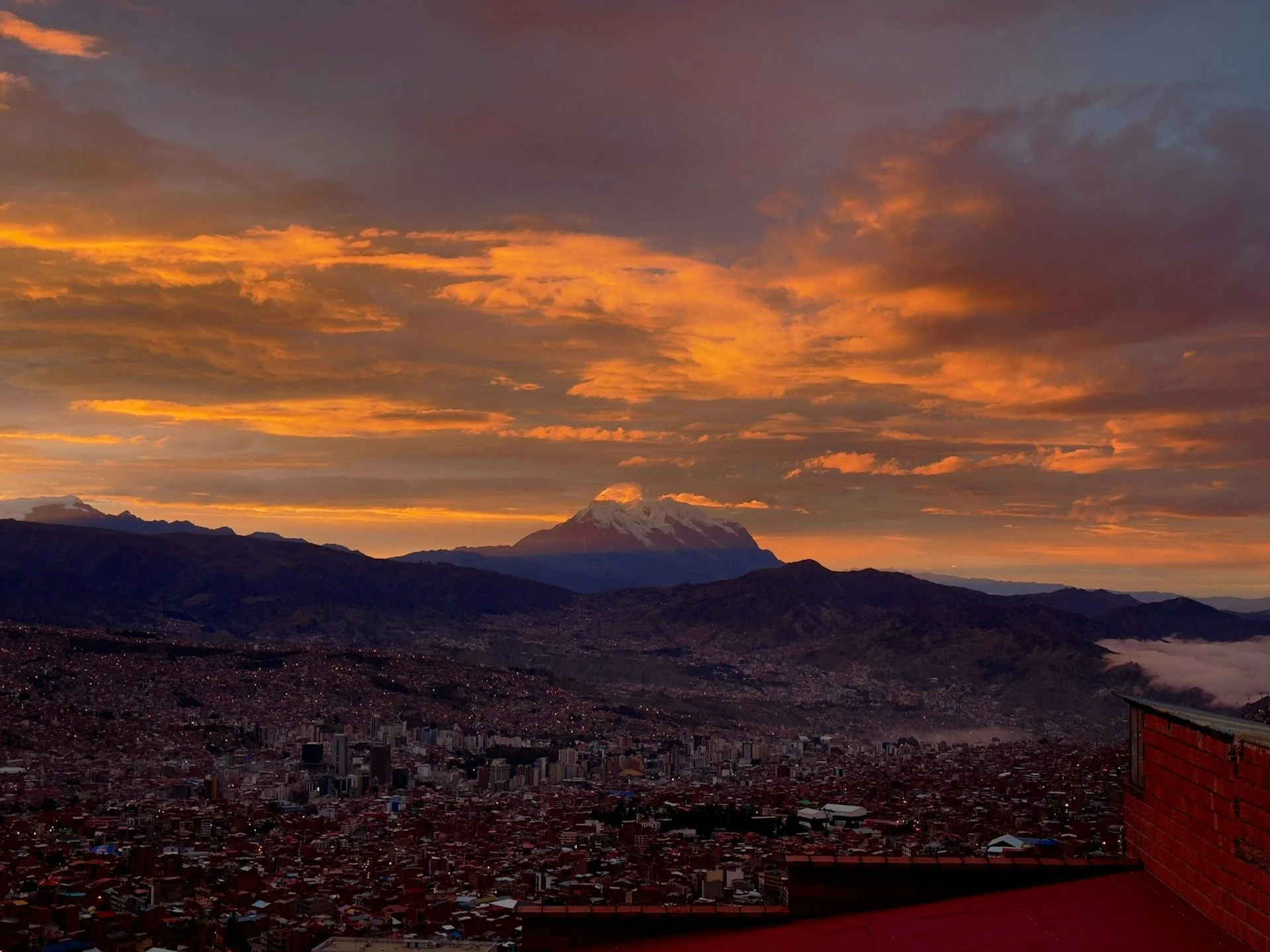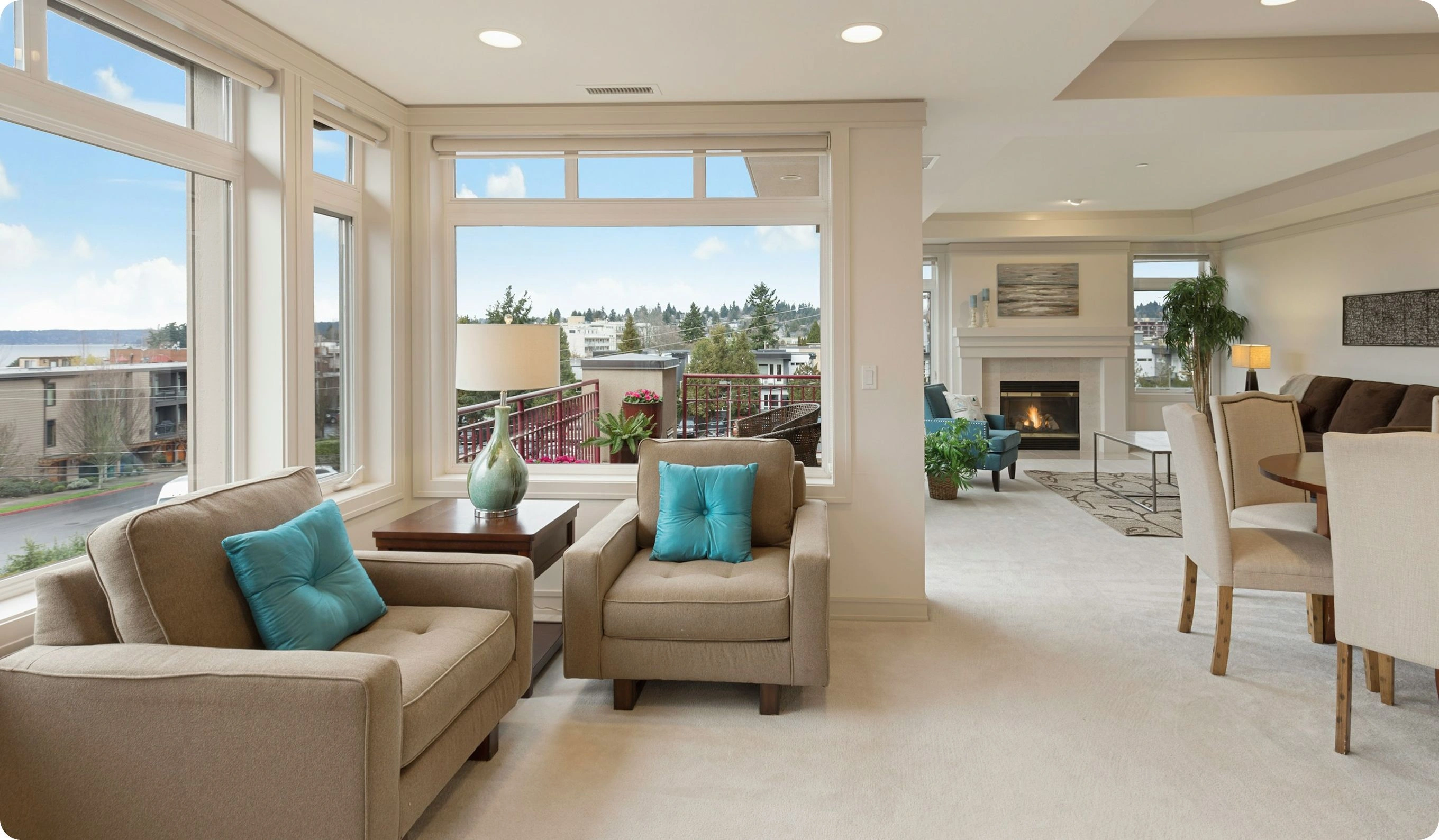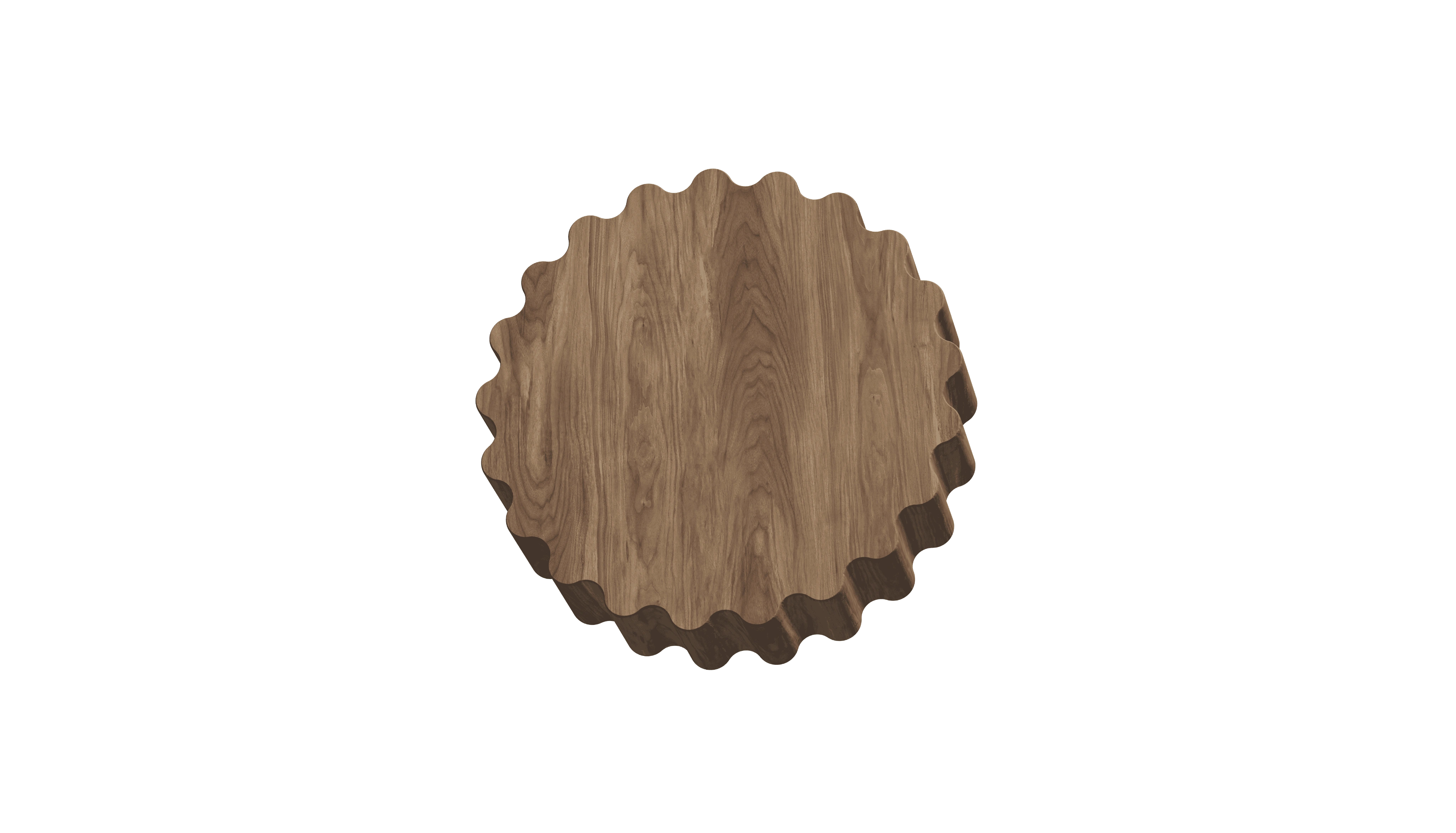Secondary real estate in El Alto, BoliviaPanoramic plateau homes withmodern fittings and yields

Best offers
in El Alto
Benefits of investment in
Bolivia real estate
Move-In Ready Homes
Secondary residences in El Alto’s established districts come fully renovated with modern kitchens, energy-efficient windows, upgraded HVAC and reinforced structures—enabling buyers to occupy or lease immediately, minimize renovation costs, and accelerate rental income flows.
Mature Infrastructure
El Alto’s mature infrastructure features reliable municipal water, steady electricity, sealed road networks, and efficient cable car links to La Paz—ensuring seamless living, strong asset liquidity, and dependable services backed by VelesClub Int.’s local expertise.
Proven Rental Demand
Consistent demand from university students, local professionals, and cross-border traders drives occupancy rates above 85% in El Alto—yielding documented net returns of 6%–8% annually and offering investors predictable income streams and clear exit pathways.
Move-In Ready Homes
Secondary residences in El Alto’s established districts come fully renovated with modern kitchens, energy-efficient windows, upgraded HVAC and reinforced structures—enabling buyers to occupy or lease immediately, minimize renovation costs, and accelerate rental income flows.
Mature Infrastructure
El Alto’s mature infrastructure features reliable municipal water, steady electricity, sealed road networks, and efficient cable car links to La Paz—ensuring seamless living, strong asset liquidity, and dependable services backed by VelesClub Int.’s local expertise.
Proven Rental Demand
Consistent demand from university students, local professionals, and cross-border traders drives occupancy rates above 85% in El Alto—yielding documented net returns of 6%–8% annually and offering investors predictable income streams and clear exit pathways.

Useful articles
and recommendations from experts
Main title about secondary real estate in El Alto
Why secondary properties attract buyers
Secondary real estate in El Alto appeals to investors and owner-occupiers seeking immediate usability, panoramic views, and quantifiable returns. Unlike off-plan projects that often suffer permitting delays, variable construction costs, and uncertain completion dates, pre-owned homes and apartments come with fully operational utilities—reliable water from the municipal network, steady electricity from ENDE, and tested drainage and sewage systems—eliminating activation risks. Many properties boast commanding plateau vistas of the Altiplano and snow-capped peaks, while interiors have been thoroughly modernized: energy-efficient double glazing, bespoke open-plan kitchens with granite countertops, upgraded HVAC or natural-gas heating systems, reinforced concrete load-bearing structures, and pre-wired smart-home controls. This genuine turnkey readiness reduces holding costs and accelerates both rental and owner-occupancy plans, enabling investors to generate cash flow from day one. Transparent historical sale records in the Registro de la Propiedad and detailed cadastral certificates provide clear valuation benchmarks, empowering buyers to undertake rigorous risk assessments. With documented net rental yields of 6%–8% per annum and sustained demand from university students, municipal staff, and cross-border traders, secondary real estate in El Alto offers a compelling combination of cultural authenticity, infrastructural certainty, and robust investment performance underpinned by VelesClub Int.’s end-to-end advisory services.
Established neighbourhoods
El Alto’s secondary market is anchored by several mature districts, each presenting distinct lifestyle and investment advantages. Zona El Valle comprises renovated mid-century apartment blocks and semi-detached villas on broad avenues lined with eucalyptus trees, offering immediate access to local markets, clinics, and municipal offices. Many units here feature turnkey finishes: designer kitchens installed with imported cabinetry, reinforced balcony railings, high-performance insulation and communal gardens. In Distrito 2, neighbourhoods such as Santa Rosa de Lima and Barrio Sotomayor showcase refurbished three- to four-bedroom houses with private courtyards, solar-ready electrical circuits, and gated security—ideal for families seeking stability and school catchments. The teleférico lines linking Zona Alta to La Paz’s city centre have spurred refurbishments along the Linea Amarilla corridor, where older two-storey homes have been converted into multi-unit complexes with rooftop terraces, secure parking, and fiber-optic broadband. Emerging pockets in Distrito 3 around Avenida Panorámica feature hillside flats with panoramic mountain panoramas, benefiting from ongoing road-widening projects and expanded bus rapid transit (BRT) routes. Across these zones, essential civic services—sealed roads, continuous power supply, potable water distribution, reliable waste collection, and rapid-response maintenance crews—operate consistently, ensuring minimal post-purchase capital outlays and seamless community integration.
Who buys secondary real estate
The buyer profile in El Alto’s secondary market is remarkably diverse, reflecting the city’s strategic position and economic dynamism. University students and academic staff at public and private institutions—Universidad Pública de El Alto, Universidad Católica Boliviana—rent well-appointed one- and two-bedroom apartments in Santa Rosa and Distrito 7, valuing inclusive rent-plus-utilities packages and proximity to campus shuttles. Local middle-income families invest in turnkey three- and four-bedroom houses in Zona Norte and Distrito 2, prioritizing established school catchments, community networks, and yard space for multi-generational living. Municipal employees and healthcare professionals based at the Hospital Holandés and local clinics secure renovated flats in Zona Centro, benefiting from short commutes and stable building management. Cross-border traders and entrepreneurs, who shuttle between El Alto and Peruvian markets, favor modern flats near the international trade corridors along Avenida 6 de Marzo, enabling immediate rental or personal occupancy. Diaspora investors, primarily from the United States and Spain, purchase small apartment blocks or mixed-use commercial-residential properties along the teleférico lines, leveraging documented yield forecasts and exit-strategy modelling by VelesClub Int. Across all buyer segments, the key unifying factors are immediate usability, transparent transaction histories, and integration into well-serviced urban fabrics that minimize operational risk and underpin predictable returns.
Market types and price ranges
El Alto’s secondary real estate spans a broad spectrum of typologies and budgets suited to diverse objectives. Entry-level studio units and one-bedroom flats in emerging peri-urban districts such as Distrito 8 and Zona Sur start from approximately USD 25,000 to USD 50,000. These compact units offer modern laminate finishes, communal laundry facilities, and proximity to minibús stops along Avenida Juan Pablo II. Mid-range two- to three-bedroom apartments and semi-detached houses in established areas—Santa Rosa de Lima, El Valle, and Distrito 2—trade between USD 60,000 and USD 120,000, featuring granite countertops, updated bathrooms with walk-in showers, private parking bays, and secure gated compounds. Premium turnkey villas and high-end penthouse flats in Distrito 7 and Cerro Tata Inti command USD 130,000 to USD 250,000, driven by plot size, turnkey furnishings, serviced-residence amenities (concierge, private gym) and strategic plateau vistas. For portfolio investors, small multi-unit apartment blocks (4–6 units) along Avenida Panorámica and adjacent to teleférico stations list between USD 200,000 and USD 400,000, delivering diversified rental income streams and scale economies. Mortgage financing through Banco Unión, Banco Mercantil Santa Cruz, and Banco de Desarrollo S.A. is available at rates of 8%–10% annually, typically requiring down payments of 20%–30%. Documented net rental yields average 6%–8% per annum across core districts—underpinned by stable tenant pools of students, professionals, and traders—providing robust benchmarks for cash-flow modelling and strategic portfolio planning guided by VelesClub Int.
Legal process and protections
Acquiring secondary real estate in El Alto follows Bolivia’s regulated conveyancing framework under the Ley de Tierras y Aguas and the Código Civil. Transactions commence with a signed Contrato de Promesa de Compraventa (promise-to-sell agreement) and payment of an earnest deposit—commonly 5%–10% of the sale price—held in escrow by a licensed notary. Buyers commission due diligence: a Certificado de Registro de la Propiedad to verify title chain and encumbrances; a Certificado Catastral from the Instituto Geográfico Militar to confirm boundary accuracy; and technical inspections—structural integrity, termite and moisture surveys, electrical compliance checks—conducted by certified engineers. Upon satisfactory review, parties execute the Escritura Pública before the notary, at which point transfer tax (Impuesto a la Transferencia de Bienes Inmuebles) of 3%–5% (sliding scale) and notarial and registry fees are payable. The new title is then registered in the Registro de la Propiedad, granting formal legal recognition and public notice. Foreign buyers face no special restrictions on urban property acquisitions but must repatriate funds through approved banking channels. Statutory warranties protect purchasers against latent defects for up to one year post-closing, with recourse through civil courts for undisclosed issues. VelesClub Int. orchestrates every step—legal coordination, document preparation, tax filings, and registry interactions—ensuring compliance, risk mitigation, and a seamless closing experience for both domestic and international clients.
Best areas for secondary market
Several sub-markets in El Alto stand out as prime secondary-market hotspots due to infrastructure maturity, tenant demand, and capital-growth potential. Santa Rosa de Lima and Barrio Sotomayor deliver consistently high occupancy rates—often above 85%—driven by proximity to universities, health clinics, and municipal offices. Zona Centro’s blocks along Avenida Liberator and Calle 6 de Marzo offer mixed-use buildings with ground-floor retail and turnkey flats above, appealing to both commercial and residential tenants. Distrito 7 (Cerro Tata Inti) commands premiums for its elevated plateau views and cooler microclimate, featuring refurbished mid-century villas and modern apartments near the cable car stations. Emerging corridors along the teleférico Linea Verde and Amarilla—such as Ciudad Satélite and Distrito 5—provide value-add opportunities: older family homes ripe for boutique conversions into multi-unit rentals equipped with smart-home systems and communal roof decks. Each area benefits from robust civic services—sealed roads, dependable utilities, public-transport connectivity, and community amenities like parks, markets, and clinics—ensuring stable rental demand, transparent pricing benchmarks, and strong resale prospects. VelesClub Int.’s proprietary neighbourhood-scoring algorithm and in-field research guide clients to sub-markets that best align yield targets, capital-growth forecasts, and lifestyle preferences within El Alto’s vibrant secondary real estate ecosystem.
Why choose secondary over new + VelesClub Int. support
Opting for secondary real estate in El Alto delivers immediate possession, established infrastructure, and documented performance metrics—advantages seldom matched by new-build developments. Buyers bypass permitting cycles, cost overruns, and contractor uncertainties by selecting turnkey assets with proven utility networks and transparent transaction histories. Secondary properties often feature unique regional characteristics—white-wash exterior facades, panoramic plateau balconies, and original tile-roof accents—that new constructions cannot replicate, enhancing cultural authenticity and long-term desirability. Lower entry premiums compared to off-plan offerings free up capital for interior personalization, yield-enhancing upgrades, or portfolio diversification across multiple plateau districts. Mature neighbourhood infrastructures—reliable municipal water, stable ENDE electricity, sealed road networks, efficient cable car and BRT transport, and high-speed broadband—ensure seamless move-in and minimal post-purchase maintenance. VelesClub Int. elevates the acquisition journey through comprehensive end-to-end expertise: sourcing exclusive off-market listings, conducting exhaustive due diligence, negotiating optimal terms, and managing all legal formalities. Our post-closing property management solutions—tenant placement, preventive maintenance coordination, and transparent performance reporting—optimize occupancy rates and preserve asset value. Through proactive portfolio monitoring, annual market reviews, and strategic advisory, VelesClub Int. empowers clients to maximize El Alto’s secondary real estate potential with confidence, clarity, and efficiency.
